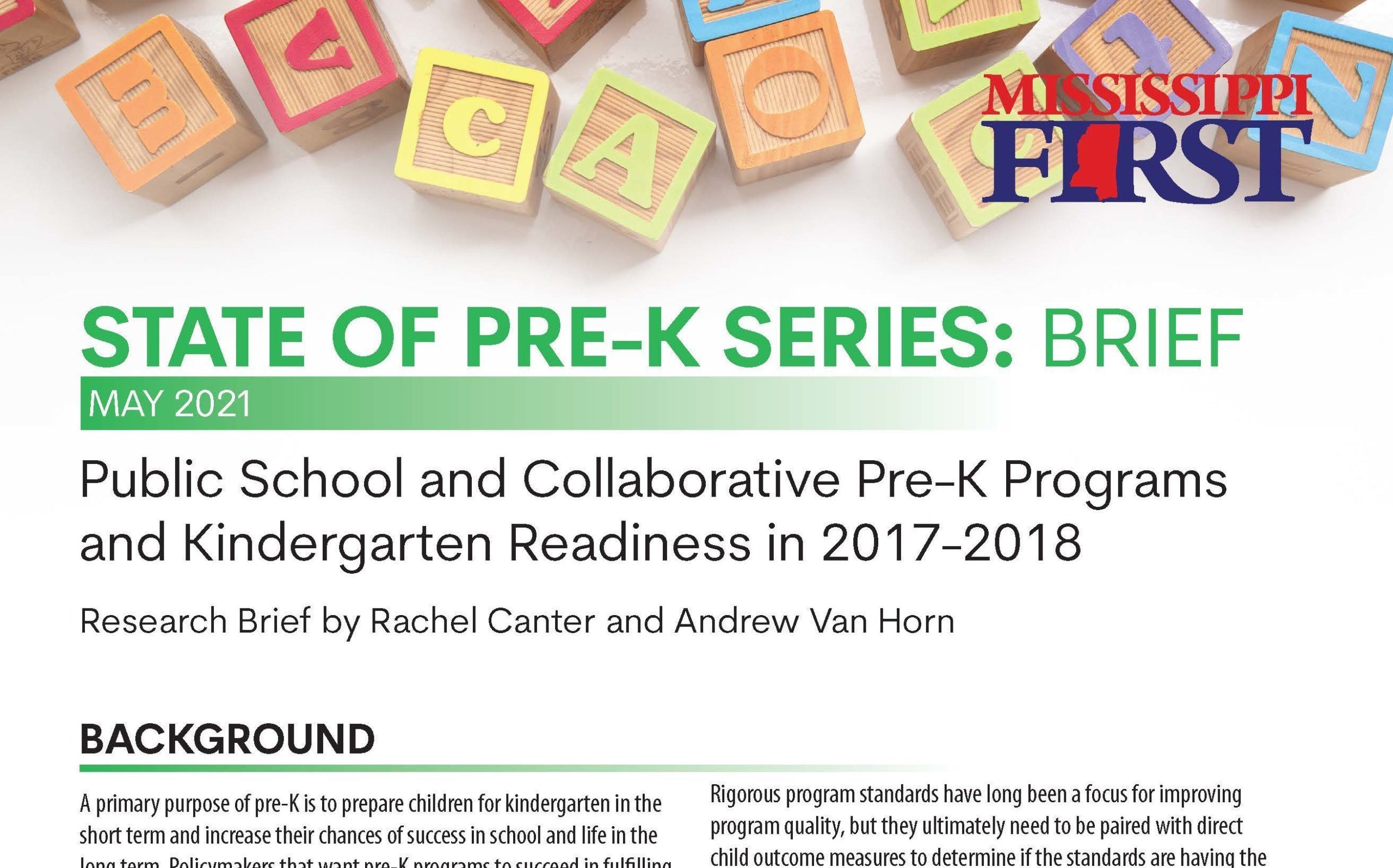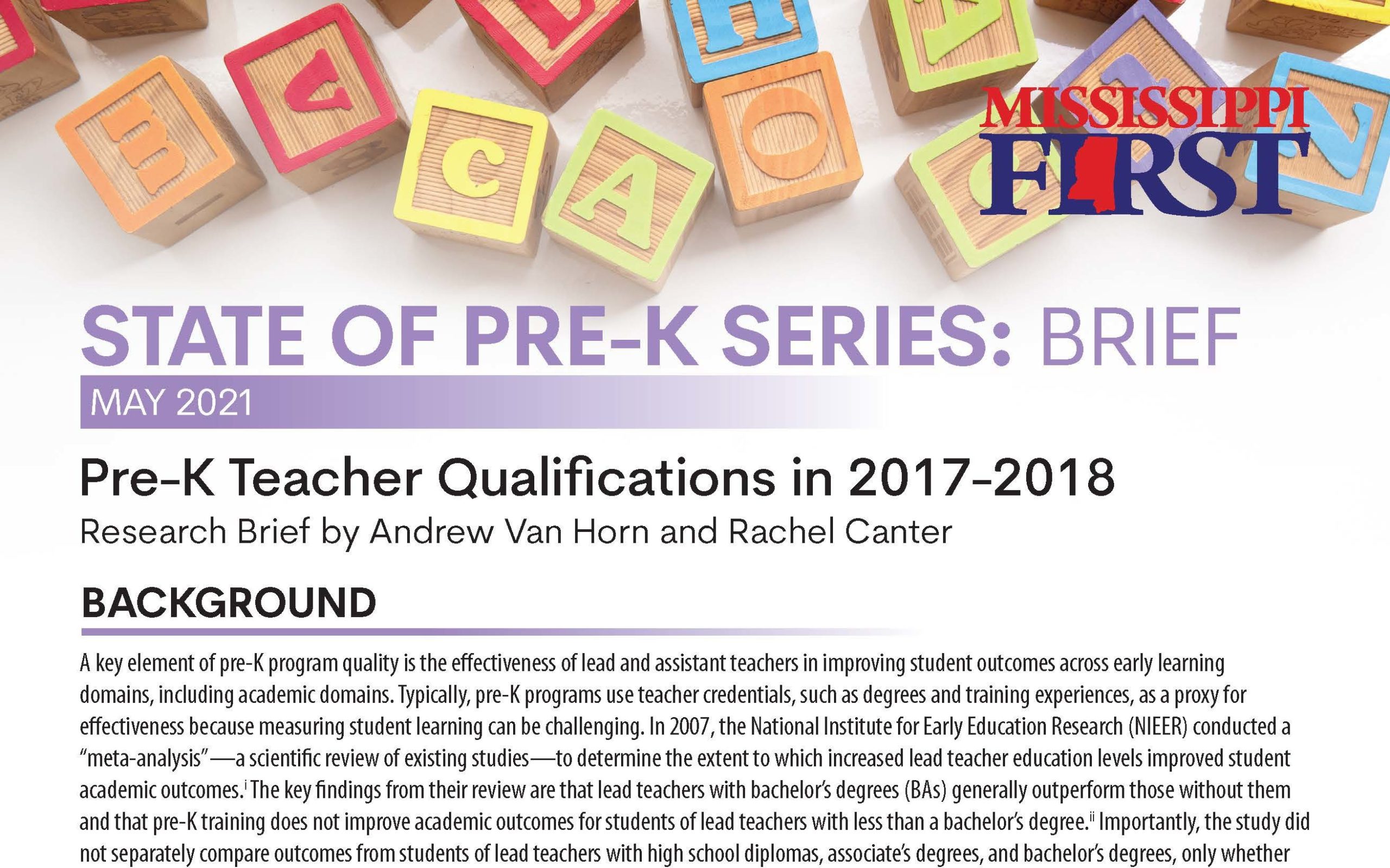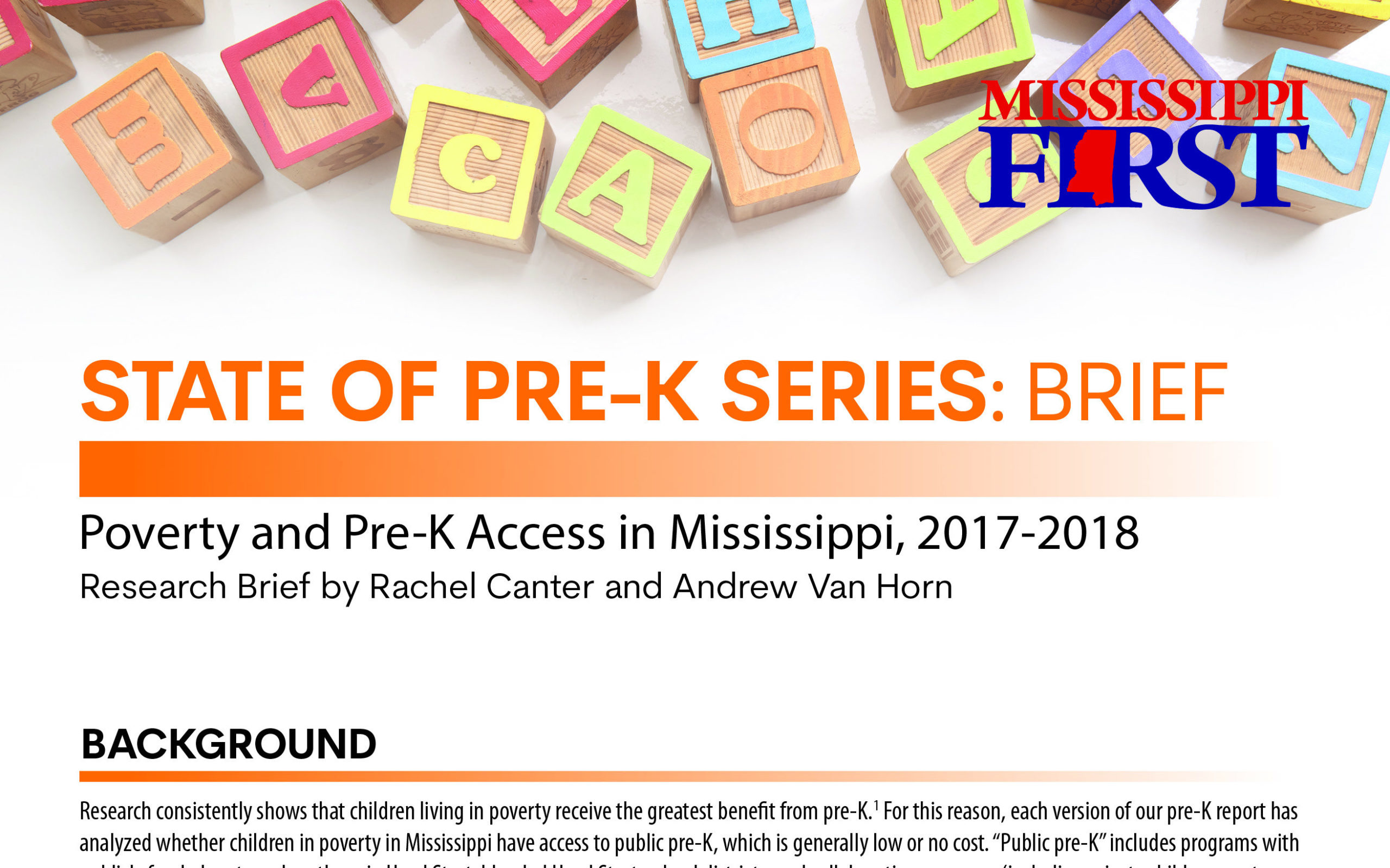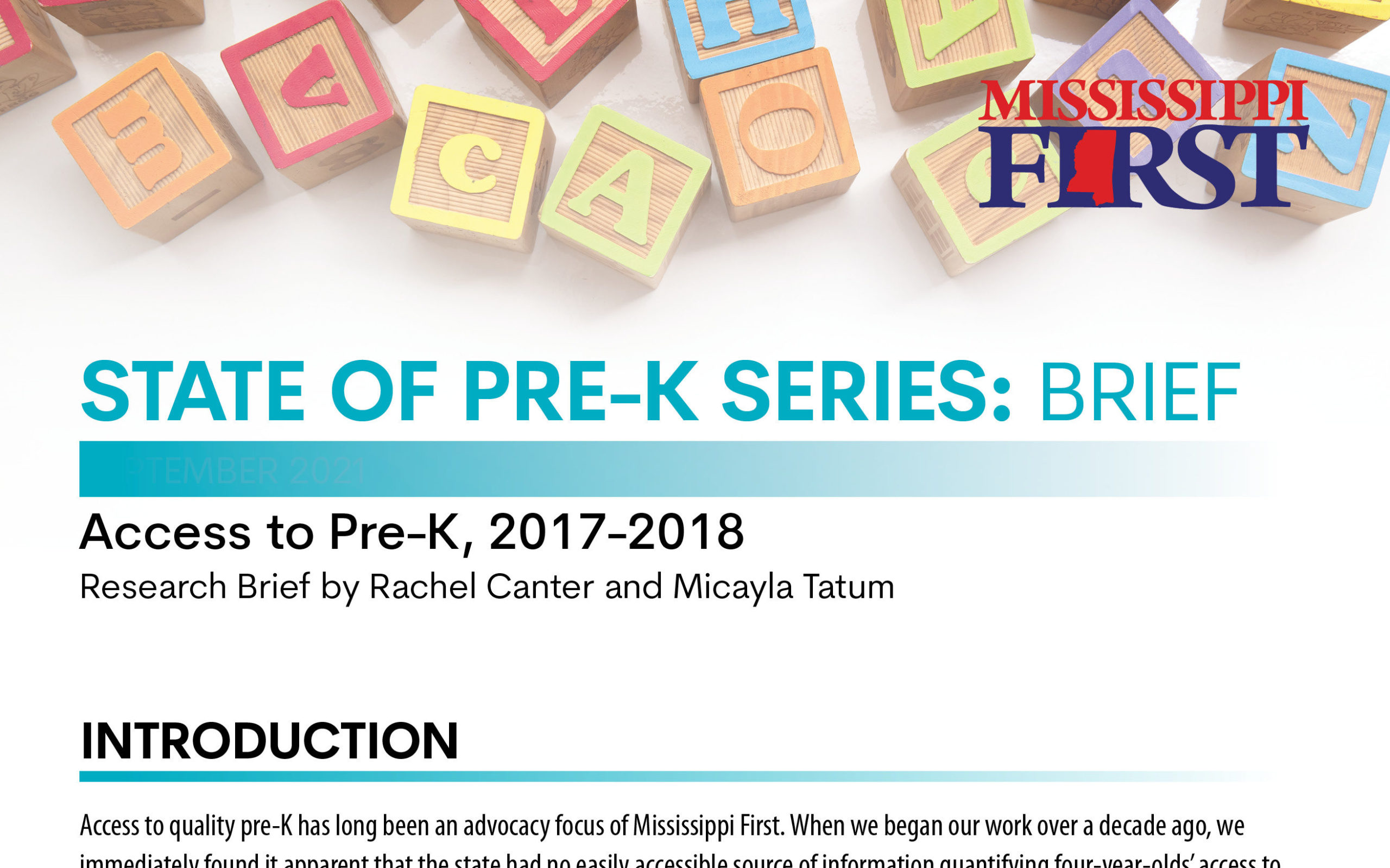Brief #4: Access to Pre-K, 2017-2018
This is the fourth and final brief in the State of Pre-K Series. The 2021 pre-K briefs as a whole provide strong evidence that the collaborative program is the path to expanding quality pre-K statewide.
Today, we are releasing the fourth and final brief of the series. The fourth brief provides pre-K access data on the state, county, and district levels.
In this brief, we calculate pre-K access rates for the state, each county, and each school district. We report two different rates:
- 2017-2018 pre-K access for four-year-olds across all provider types by state and county and
- 2017-2018 public pre-K access for 2018-2019 entering public school kindergarteners.
The 2017-2018 statewide pre-K access rate for four-year-olds across all providers was 67.29%. This rate represents the total percentage of four-year-old children served statewide when combining enrollments across provider types (public school districts, blended Head Start, Head Start, and licensed childcare), including providers participating in the Early Learning Collaboratives. We found that pre-K access for four-year-olds across all provider types shrank slightly since 2014-2015, from 69.55% to 67.29%.
In 2017-2018, both pre-K seats and the population of four-year-olds decreased, which is why overall declines in access were small. Although this is the first decline in seats we have seen since the inception of our report, the decline in population is a long-term trend. We believe the two most important strategies Mississippi can take to prevent a loss of quality and a loss of seats in our pre-K system during an era of population decline are increasing the number of early learning collaboratives and increasing the number of blended Head Start seats.
“Access to pre-K in Mississippi is essential, but access without quality will not serve the future of Mississippi,” said Micayla Tatum, Associate Director of Early Childhood Policy.
Executive Director Rachel Canter added, “Child outcome data clearly shows the difference that early learning collaboratives are making in the lives of children and families. We also see that communities with collaboratives stabilize and strengthen pre-K for every child, regardless of provider. As we continue to invest state dollars in pre-K, we must continue to support the collaborative pre-K program and ensure we keep quality as our north star.”
Background on the State of Pre-K Series
The 2021 State of Pre-K report is a series of four mini-briefs that are focused on pre-K access and quality across the state in the 2017-2018 school year.

Brief #1: Public School and Collaborative Pre-K Programs and Kindergarten Readiness in 2017-2018
Students who attend early learning collaboratives are more prepared for kindergarten than their non-collaborative peers. Increasing access to early learning collaborative programs is the path to expanding quality pre-K statewide.

Brief #2: Teacher Qualifications in 2017-18
A key element of pre-K program quality is the effectiveness of lead and assistant teachers in improving student outcomes across early learning domains, especially academic domains. This brief analyzes public school district compliance with state-mandated teacher qualifications.

Brief #3: Poverty and Pre-K Access in Mississippi, 2017-2018
In the 2017-2018 school year, we found a strong association between overall public pre-K access (all provider types) and poverty rates at the county level. Increases in poverty are generally associated with an increase in access.

Brief #4: Access to Pre-K, 2017-2018
The pre-K access rate for four-year-olds across all providers was 67.29% in 2017-2018 compared to 69.55% in 2014-2015. Both pre-K seats and the four-year-old population declined in this time period.

